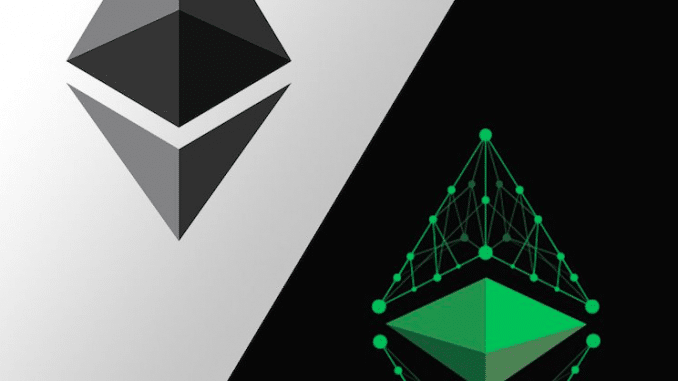 In today's blockchain world, developers are faced with many choices, and Ethereum Classic (ETC) is a platform that cannot be ignored. This article will explore why developers should choose to build applications on ETC, specifically its advantages as a Proof of Work (POW) platform.
In today's blockchain world, developers are faced with many choices, and Ethereum Classic (ETC) is a platform that cannot be ignored. This article will explore why developers should choose to build applications on ETC, specifically its advantages as a Proof of Work (POW) platform.
What is Ethereum Classic (ETC)?
Ethereum Classic is the original version of Ethereum, which forked in 2016 due to the DAO incident. ETC retains the principles of Ethereum and promises not to change past transactions, making it a solid blockchain platform. The core concept of ETC is "code is law", which means that on this platform, the execution of smart contracts is not subject to the intervention of any third party.
1. Advantages of proof-of-work: ETC, as a proof-of-work blockchain, provides a high degree of security and decentralization. The proof-of-work mechanism requires miners to solve mathematical puzzles to verify transactions, making the network less vulnerable to attacks. In contrast, many other blockchain platforms use Proof of Stake, which can lead to concentration of power and potential security risks.
2. Trust minimization: Trust minimization is an important feature of ETC. When using decentralized applications (dapps) built on ETC, users can be confident that their funds and functionality will not be affected by any third party or development team. This point has been mentioned many times in the Bitcoin white paper, showing the importance of trust minimization in blockchain technology.
3. Permissionless environment: On ETC, anyone can freely create and hold addresses and assets without filling out forms, providing proof of identity, or passing background checks. This permissionless feature makes it easy for users to participate in the blockchain ecosystem and interact with your dapp.
4. Developer freedom
For developers, ETC provides an open environment, allowing them to freely deploy smart contracts without restrictions. This means that no matter where you are, you can implement your innovations and ideas on ETC without worrying about external intervention or censorship.
5. Security: Applications built on ETC are considered among the most secure in the world. Due to the decentralized nature of ETC, no single entity can control the entire system, which greatly reduces the risk of censorship and attacks. Users’ transactions are not censored when sent to the blockchain, making ETC an ideal choice, especially for applications that require high security.
6. Composability: ETC is also composable, which means developers can combine different dapps and functions to create new applications and services. This flexibility allows developers to quickly build and launch innovative solutions using existing tools and resources.
7. Global developer community: ETC has an active global developer community where developers can support and collaborate with each other to jointly promote the development of the ecosystem. This community-driven model not only promotes the sharing of knowledge, but also inspires innovation and inspiration.
8. Conclusion
In summary, Ethereum Classic (ETC) is a powerful and secure blockchain platform that offers multiple advantages to developers. Whether it is the security of proof-of-work, trust-minimized design, or permissionless development environment, ETC is an ideal choice. As blockchain technology develops, choosing to build applications on ETC will allow you to realize its full potential and provide users with the safest and most reliable services.
In future articles, we will further explore other features and benefits of ETC to help developers gain a deeper understanding of why they should choose to build applications on Ethereum Classic.